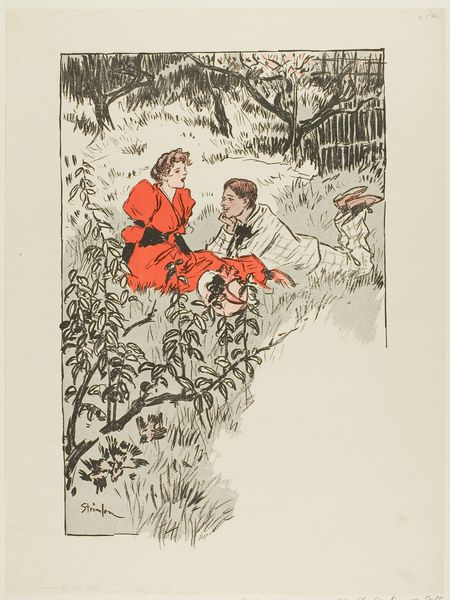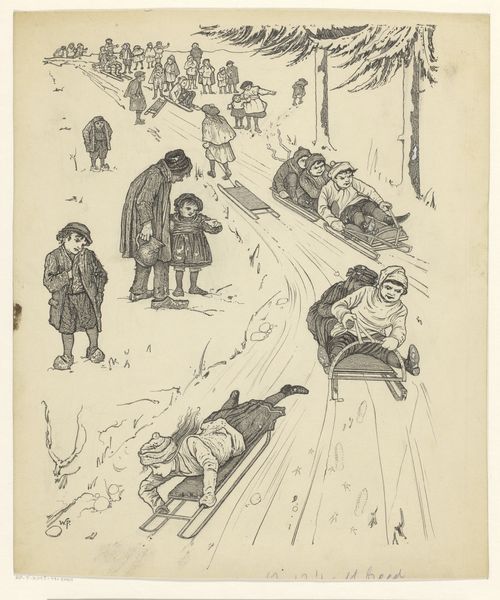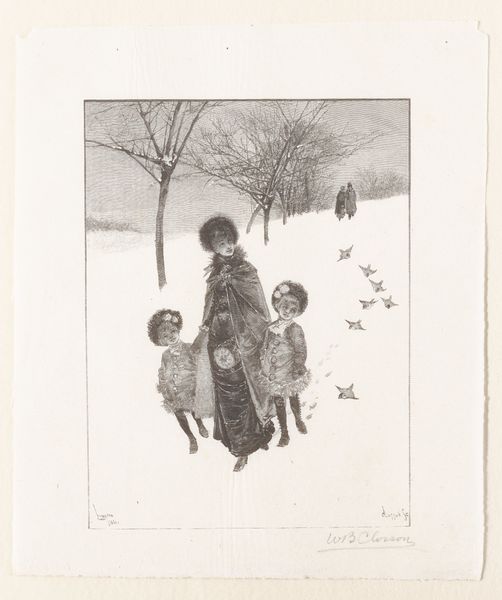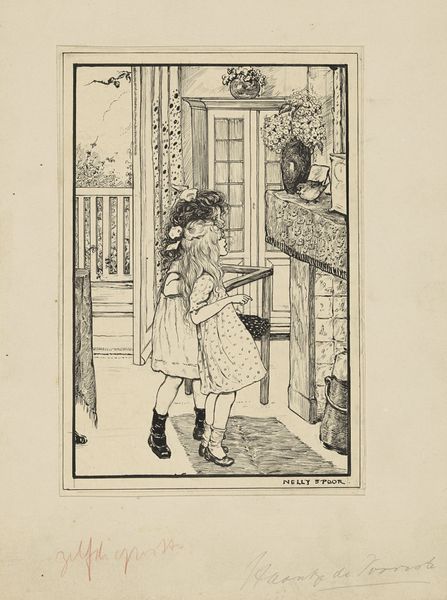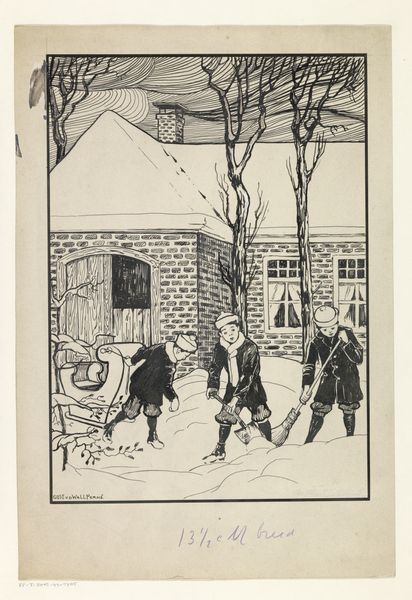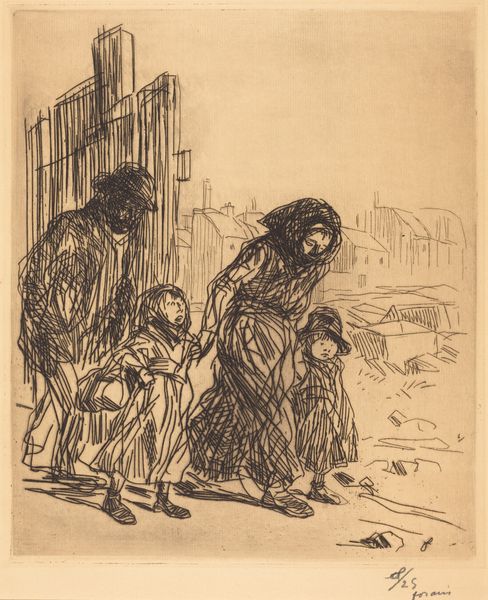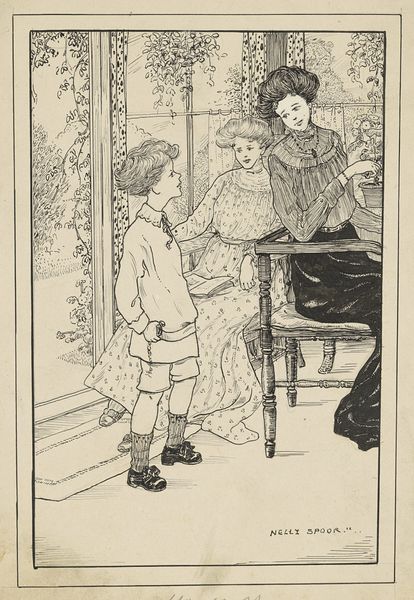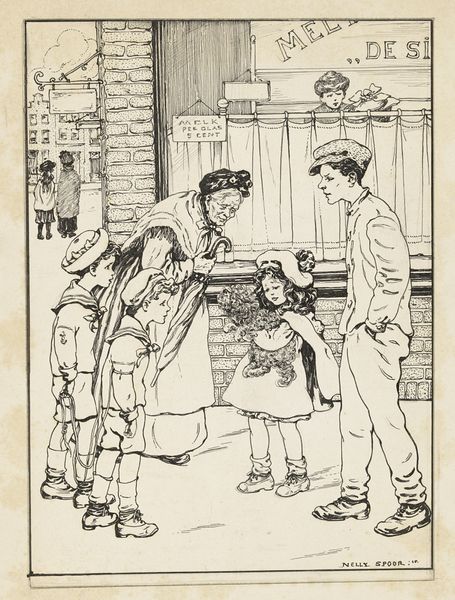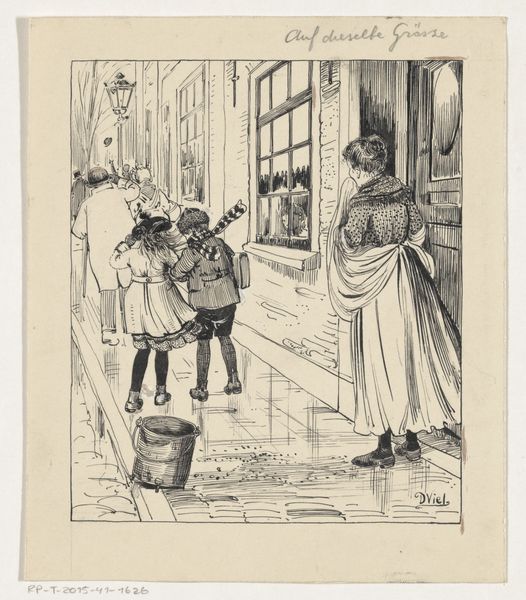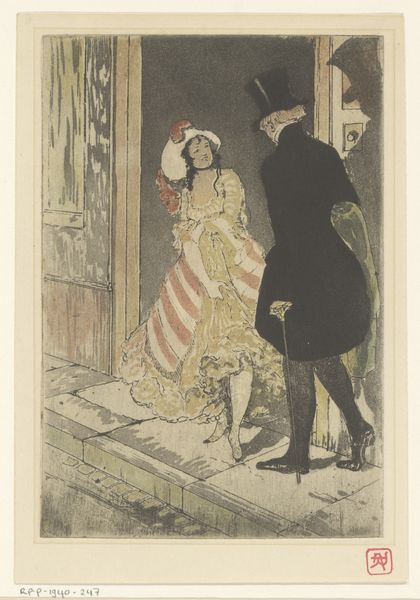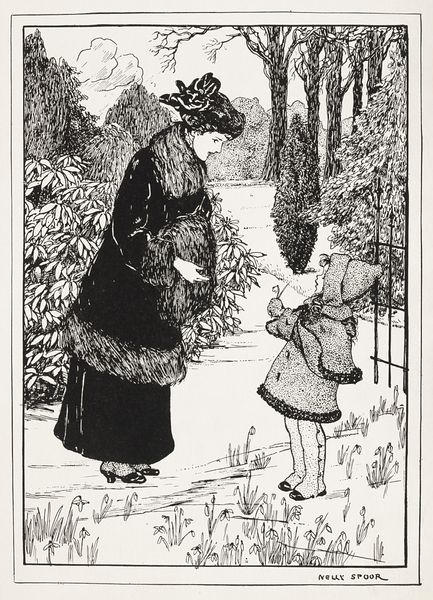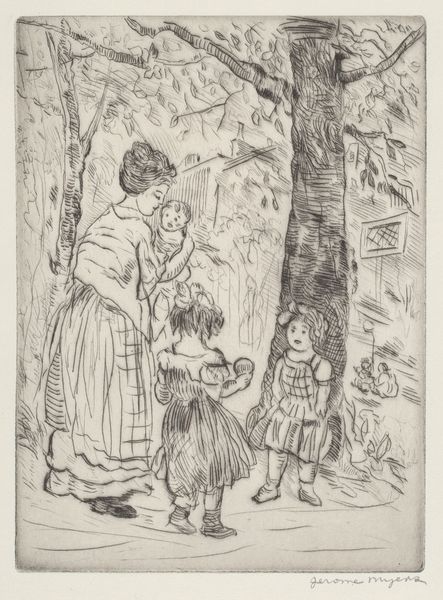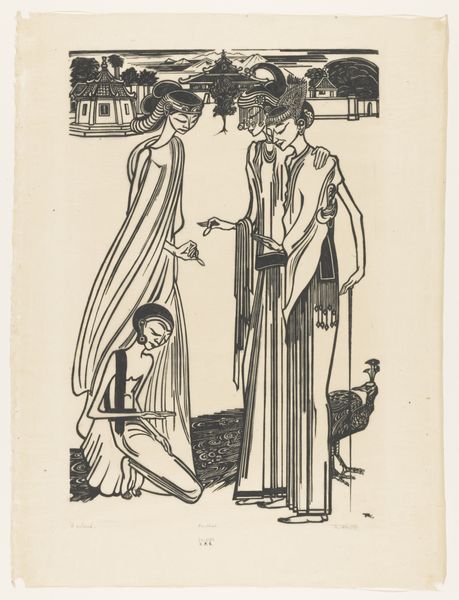
Dimensions: 324 × 225 mm (image); 419 × 308 mm (sheet)
Copyright: Public Domain
Curator: Stepping up to the work before us, we have “Les Petiots,” a drawing by Théophile Alexandre Steinlen, created around 1893. It’s rendered with pencil on paper and currently resides here at the Art Institute of Chicago. Editor: It's evocative. The figures are rendered with such distinct character, they give off an immediate impression of innocence against the bare, subtly colored backdrop. Curator: Absolutely. The positioning of the figures, their closeness to each other, it speaks volumes. These are clearly children, perhaps sharing a sense of communal belonging during their difficult lives. In that era, street children, often victims of urban poverty, would find solidarity, a replacement for broken family structures. Steinlen, after all, regularly featured working-class life in his images. Editor: Yes, there's definitely a somber element. The color palette itself, restrained with pale pink in the upper sky, communicates a certain fragility. The figure wrapped in the red blanket is the focal point and suggests shared clothing between family or a sense of mutual survival among children in similar social circumstances. Curator: Looking at this work now, its impact is different, I would argue. What would have appeared familiar in late 19th century Paris speaks more powerfully of a forgotten, obscured element of the City of Lights. Art becomes memory as the everyday realities of social issues are often whitewashed in conventional historical records. Editor: Do you think it also speaks to children and power? The children here feel outside the gaze of control, of the burgeoning consumer culture of the late 19th century. Steinlen offers a portrait of youthful subjects claiming ownership over something like city spaces or play time. Curator: The detail of one playing the pipe suggests pleasure beyond societal limitations. Editor: Considering that Steinlen himself was an anarchist, this composition might reflect that interest, the children taking on an existence apart from the growing world of capitalist enterprise. Curator: “Les Petiots” leaves us to reflect on how images shape social and cultural memory. Editor: Indeed, images shape cultural discourse, they're a key player in collective dialogue.
Comments
No comments
Be the first to comment and join the conversation on the ultimate creative platform.
